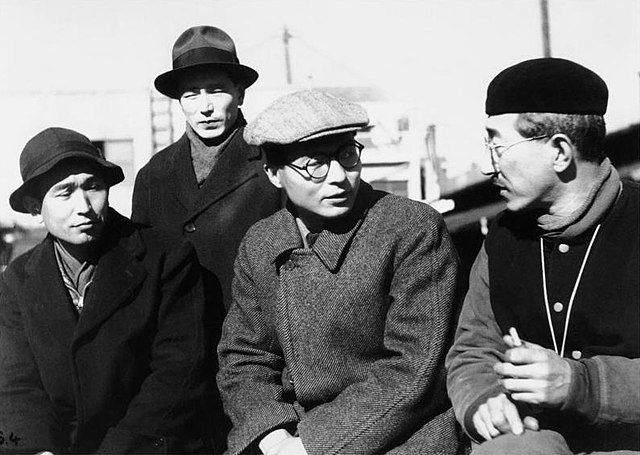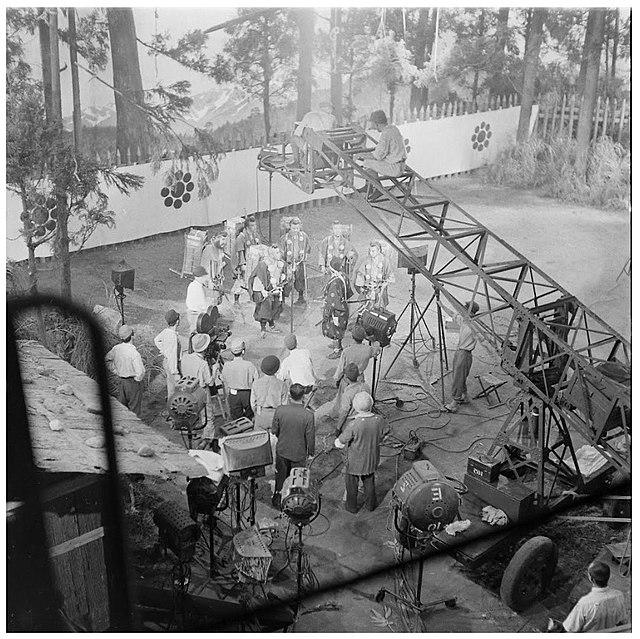Keisuke Kinoshita was a Japanese film director and screenwriter. While lesser-known internationally than contemporaries such as Akira Kurosawa, Kenji Mizoguchi and Yasujirō Ozu, he was a household figure in his home country, beloved by both critics and audiences from the 1940s to the 1960s. Among his best known films are Carmen Comes Home (1951), Japan's first colour feature, Tragedy of Japan (1953), Twenty-Four Eyes (1954), You Were Like a Wild Chrysanthemum (1955), Times of Joy and Sorrow (1957), The Ballad of Narayama (1958), and The River Fuefuki (1960).
Keisuke Kinoshita (early 1950s)
Akira Kurosawa was a Japanese filmmaker and painter who directed 30 films in a career spanning over five decades. He is widely regarded as one of the greatest and most influential filmmakers in the history of cinema. Kurosawa displayed a bold, dynamic style, strongly influenced by Western cinema yet distinct from it; he was involved with all aspects of film production.
Kurosawa on the set of Seven Samurai in December 1953
From the left: Kurosawa, Ishirō Honda, and Senkichi Taniguchi with their mentor Kajirō Yamamoto, late 1930s
Kurosawa (left) and Mikio Naruse (right) during the production of Avalanche (1937)
Filming of The Men Who Tread on the Tiger's Tail, 1945





